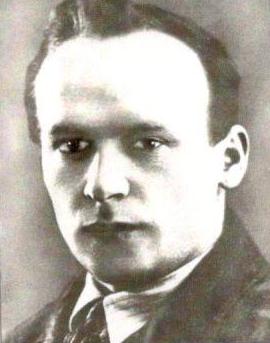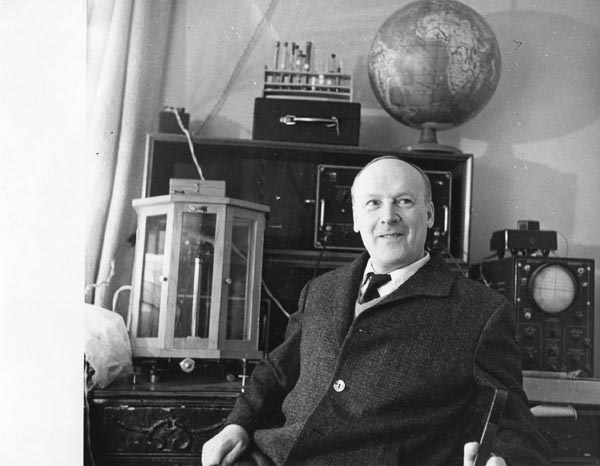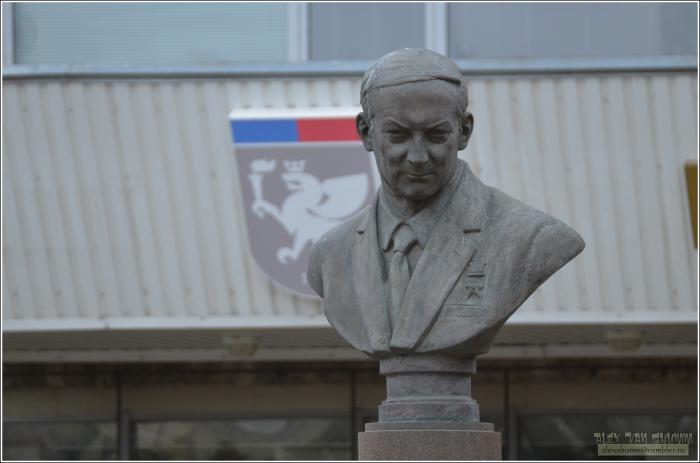 Web Content Display
Web Content Display

Soviet Physicist Known for Discovery of Electron Paramagnetic Resonance in 1944, the Major Achievement in Physics of the 20th Century.
Born in 1907 in the city of Mohyliv-Podilskyi (the Vinnytsia Oblast, Ukraine) in the family of a military doctor Konstantin I. Zavoisky. In 1908, the family moved to Kazan, where K.I. Zavoisky continued to serve as a doctor at a gunpowder factory.
In 1926, E.K. Zavoisky graduated from school No. 10 and enrolled into the Physics and Mathematics Department at the Kazan State University. After graduation, in 1931, he entered a PhD program, where he began to study the physical and chemical reactions of ultra-short waves on substances.
In 1939-1942, he worked at Kazan Aviation Institute as the head of the Department of General Physics.
In 1947-1951, E. Zavoisky participated in creation of an atomic bomb at the Design Office-11 (Arzamas-16). In 1951-1976, he worked for I.V. Kurchatov in the Laboratory No. 2.
In the early 1940’s, while examining paramagnetic relaxation in condensed medium using the method of resonant absorption of a substance radio waves with a frequency of 100 MHz and the method of modulation of the constant magnetic field. E. Zavoisky was able to observe the absorption peaks of the microwave field in anhydrous chromium chloride, in manganic and copper sulfates, and in other paramagnetic salts.

The discovery of the method of Electron Paramagnetic Resonance (EPR) provided an impetus to the establishment and development of scientific centers in many countries of the world.
It is believed, that Evgeniy K. Zavoisky observed Magnetic Nuclear Resonance signals in June 1941, however Proton Resonance was sporadic and the results were poorly reproducible. The outbreak of war put an end to further research in this field.
After the EPR discovery, other methods of magnetic resonance were established: Nuclear Magnetic Resonance, Ferromagnetic Resonance, Antiferromagnetic Resonance, Nuclear Quadrupole Resonance, Magnetic Acoustic Resonance, and many types of Double Resonances.
The discovery of the EPR method led to outstanding success in the physics of magnetic phenomena, solid state physics, physics of fluids, inorganic chemistry, mineralogy, biology, medicine, and other sciences. On the basis of resonant absorption of microwave radiation phenomena, such as, a paramagnetic amplifier has been created, which is used to ensure long-distance space communication.

In 1958-1963, E.K. Zavoisky was nominated eight times for the Nobel Prize in Physics, and in 1958–1960 – for the Nobel Prize in Chemistry.
The International Society for Magnetic Resonance awarded Evgeniy K. Zavoisky posthumously the special prize for vast contribution to science. In 1991, the International Prize named after E.K. Zavoisky was established. In 1984, the Kazan Physical-Technical Institute of the Kazan Scientific Center of the Russian Academy of Sciences was named after E. K. Zavoisky. One of the streets of Kazan city was also named after him.
